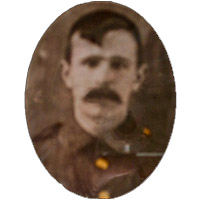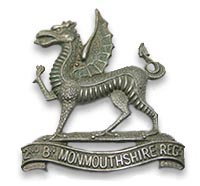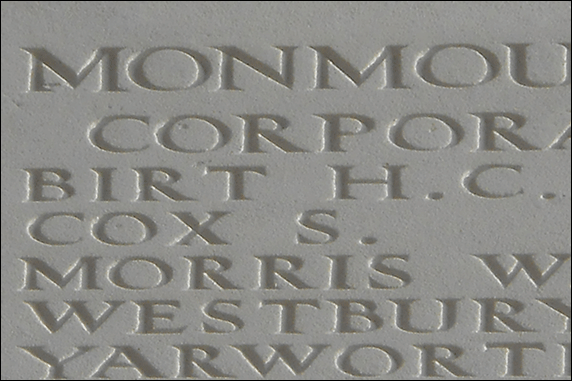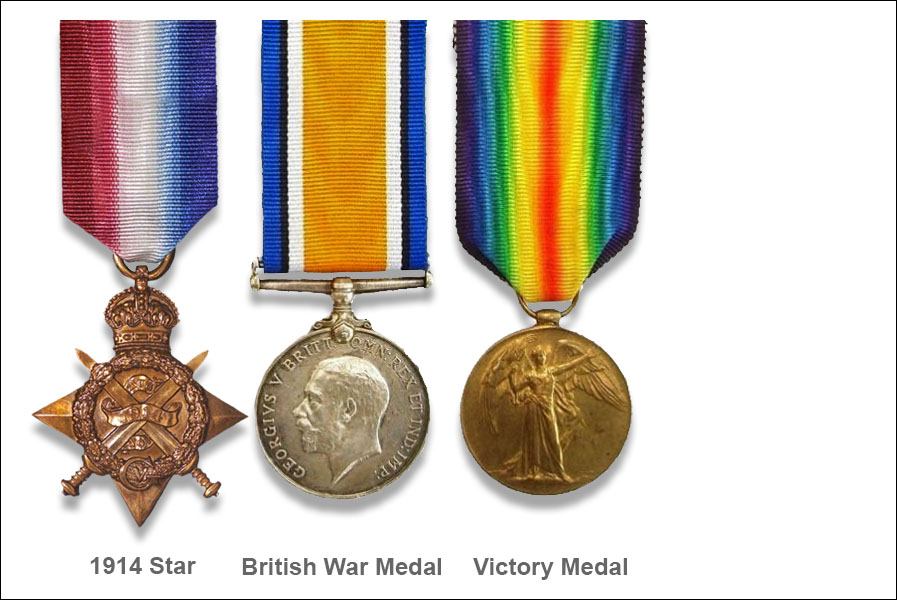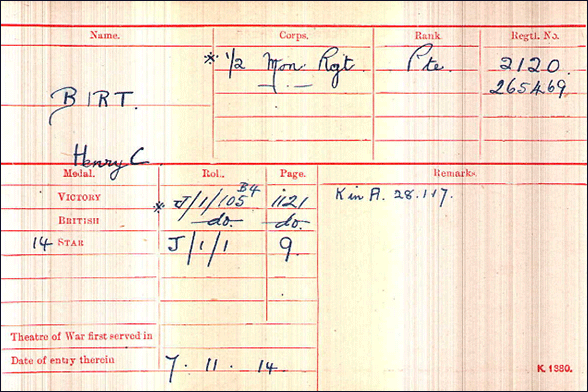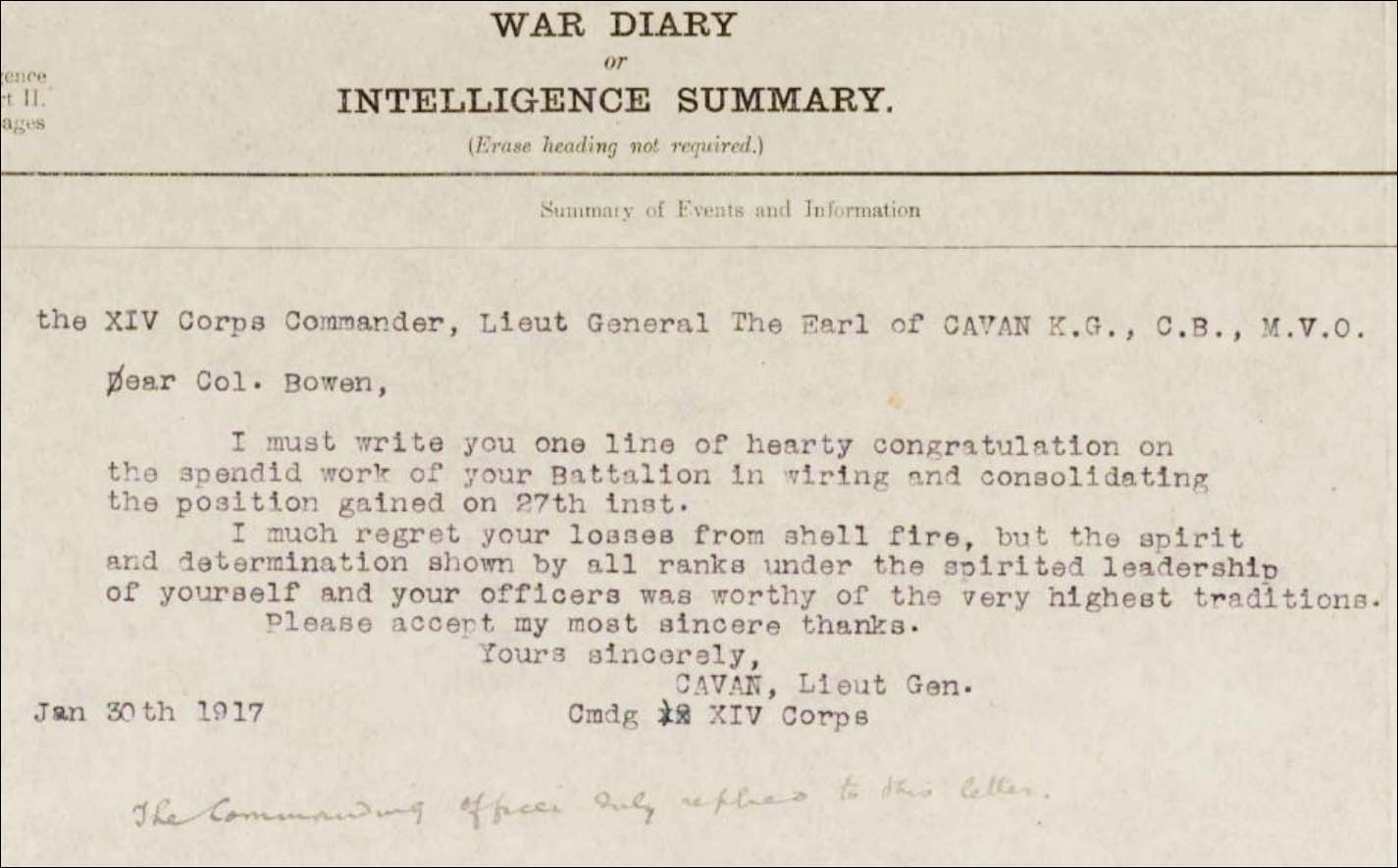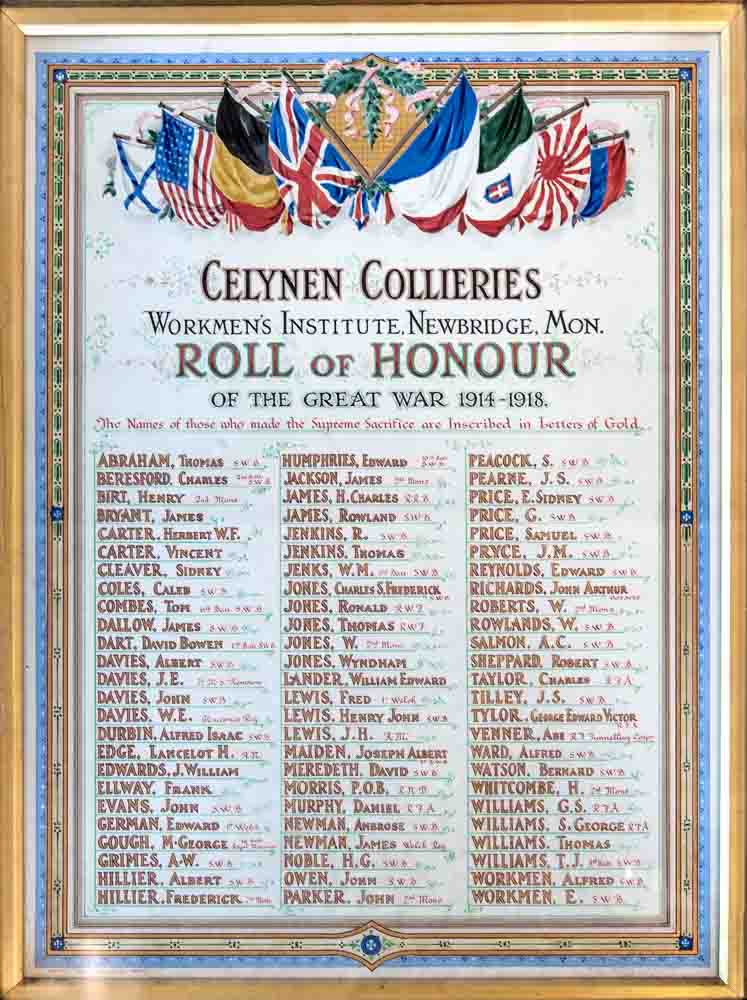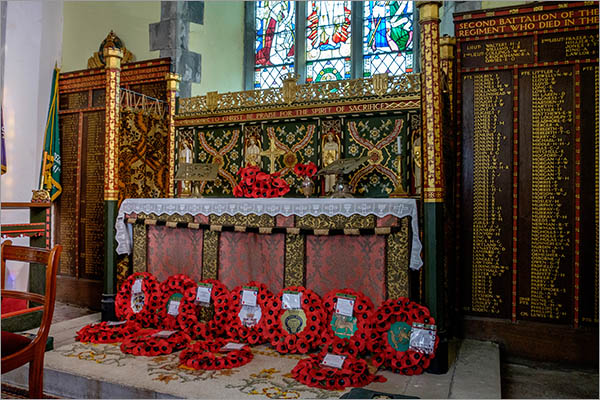Henry Charles Birt
Monmouthshire Regiment
| Unit/Regiment | Monmouthshire Regiment |
| Battalion | 2nd |
| Rank | Corporal |
| Service Number | 2120 & 265469 |
Theatre of War first served in | France |
| Date of entry therein | 07/11/1914 |
| Age at Death | 26 |
| Date of Death | 28/01/1917 |
| Burial/Memorial Reference | Thiepval Memorial Pier 16 Face B. |
| CWGC Family Details | |
| SDGW – Where Born | Gloucester (Attestation papers) |
| Enlisted | Crumlin, Monmouthshire |
| Resided | Newbridge, Monmouthshire |
| How Died | Killed in action |
| Theatre of War | France & Flanders |
| Medal Entitlement | 1914 Star
British War Medal
Victory Medal |
| Notes | Commemorated on the Celynen Collieries Roll of Honour
Commemorated on the 'H' Company, 2nd Monmouthshire Regt Roll of Honour
|
Family
Henry Charles Birt was born in Gloucester in 1889, the son of Josiah & Susan Birt. Soon after his birth the family moved
to the Newbridge area where at least four of his siblings Alice, Gladys, John and Frederick were born.
In 1909 Henry married Florence Sarah Long and by 1911 they were living at 18 Blaen Blodau St. Newbridge with their child
Violet Susan Mary Birt (12/01/1911). Their second child William Henry Birt was born on 12/09/1913.
After Henry’s death in January 1917 Florence was awarded a pension of 24/2d a week for herself and their two children.
At the end of 1918 Florence married John Robert Dyke.
Military
Henry Charles Birt joined the 2nd Bn. Monmouthshire Regiment TF but deferred his terms of engagement, subsequently signing his
Attestation at Crumlin on 30th June 1914.
Following the declaration of war on 4th August the Regulars, Reservists and Territorials were put on a war footing and the
2nd Mons. TF took up their war station at Pembroke Dock. It should be remembered that the Territorial Force was intended for
home defence so the posting to defend Pembroke Dock is not as strange as it may seem!
On 10th August the battalion entrained for Oswestry where the training took on a more serious note when Colonel Cuthbertson gave
a lecture asking men to sign up for foreign service, as Territorials signed up for home service only. Soon after signing the
‘pledge’, as it was known, the battalion boarded trains for Northampton on 20th August 1914 where they were to continue their
training until 29th September when they were moved again, this time to East Anglia, just north of Ipswich. They were to assist
in the digging of defences against a German invasion but only a day later they were on their way back to Northampton to prepare
for active service.
The official battalion history commented:
"To be selected as one of the first Territorial battalions to reinforce the hard tried remnants of the original Expeditionary
Force was a signal honour, which is eloquent of the highest state of efficiency to which Colonel Cuthbertson had brought to the
2nd Monmouthshires."
Many other Territorial units were destined to remain in training in the UK for many months so it was, indeed, an honour to be one
of the first although there was to be another month getting used to new kit before moving to the front.
On 5th November 1914 the 2nd Mons. boarded the troop ship ‘Manchester Importer’ at Southampton docks and set sail for Le Havre
in France to join 12th Brigade, 4th Division. In all 30 officers and 984 other ranks embarked, amongst them were five men who were
destined to be commemorated on the Newbridge War Memorial.
- Pte. Henry Charles Birt (2120)
- Pte. Frederick Hillier (2134)
- L/Cpl. Jonathan Jackson M.M. (1966)
- Pte. John Parker (2068)
- L/Cpl. William Caleb Roberts (1270)
The five men undoubtedly knew each other as they would have worked together in the Celynen collieries, trained together at
Crumlin Drill Hall and they all lived within a few yards of each other. Henry Birt, Jonathan Jackson and William Roberts all lived in
Blaen-Blodau Street, Frederick Hillier lived in the next street - Torlais Street and John Parker 100 yards away in Grove Street.
The 1/2nd Mons. spent the winter of 1914-15 engaged in trench warfare near to Armentières and then took part in the Second Battle of Ypres
in April and May 1915 fighting alongside the 1/1st and 1/3rd Mons. The losses in the three battalions were so great that all three were
temporarily amalgamated until July 1915 when the 1/2nd was brought back up to strength and was able to resume its own identity.
On 30th January 1916 the Battalion left the 4th Division and moved to the Lines of Communication. Subsequently, on 1st May 1916,
they were transferred as the Pioneer Battalion on to the 29th Division who had just arrived from Egypt, a role which they were to
occupy during the Somme Offensive and then on to the end of the war.
As a result of a December 1914 Army Order, each of the BEF's Divisions was allotted a Pioneer Battalion that would be devoted to
various types of labouring work. The tough coal miners who made up the great majority of the Monmouthshire Regiment were soon seen as the
ideal men for the task and Welsh coal miners became well respected for their ability with both the pick and the rifle.
On the night of 27/28th January 1917 the battalion was engaged in digging communications trenches close to the village of Le Transloy
on the Somme. As the evening went on the Germans pounded the men of the 1/2nd Mons. as they worked desperately to dig trenches in ground
which was frozen solid to a depth of eighteen inches. Firstly “B” Coy (under Capt. A. L. Coppock) was targeted between 7pm to 9pm as they dug
the right Communications Trench and then the German artillery fire was directed onto the left Communications Trench where “C” Coy and one
platoon of “D” Coy (under Capt. J. T. George) were digging. It is testament to the heroic actions of Henry Charles Birt and his comrades
that night that no less than four were awarded the Military Medal for acts of conspicuous bravery.
The shelling of 27-28th January resulted in 15 Other Ranks being wounded and 13 killed. Henry Charles Birt was one of those killed by shell
fire, his body was never recovered and he is now commemorated on the Thiepval Monument to the Missing of the Somme.
The War Diary entry for 30th January 1917 details a letter received by Colonel Bowen from Lieut General The Earl of Cavan commending the
work of the Battalion on the night of 27/28th and expressing his regret about the losses incurred – Charles Henry Birt’s untimely
death had not gone un-noticed.
